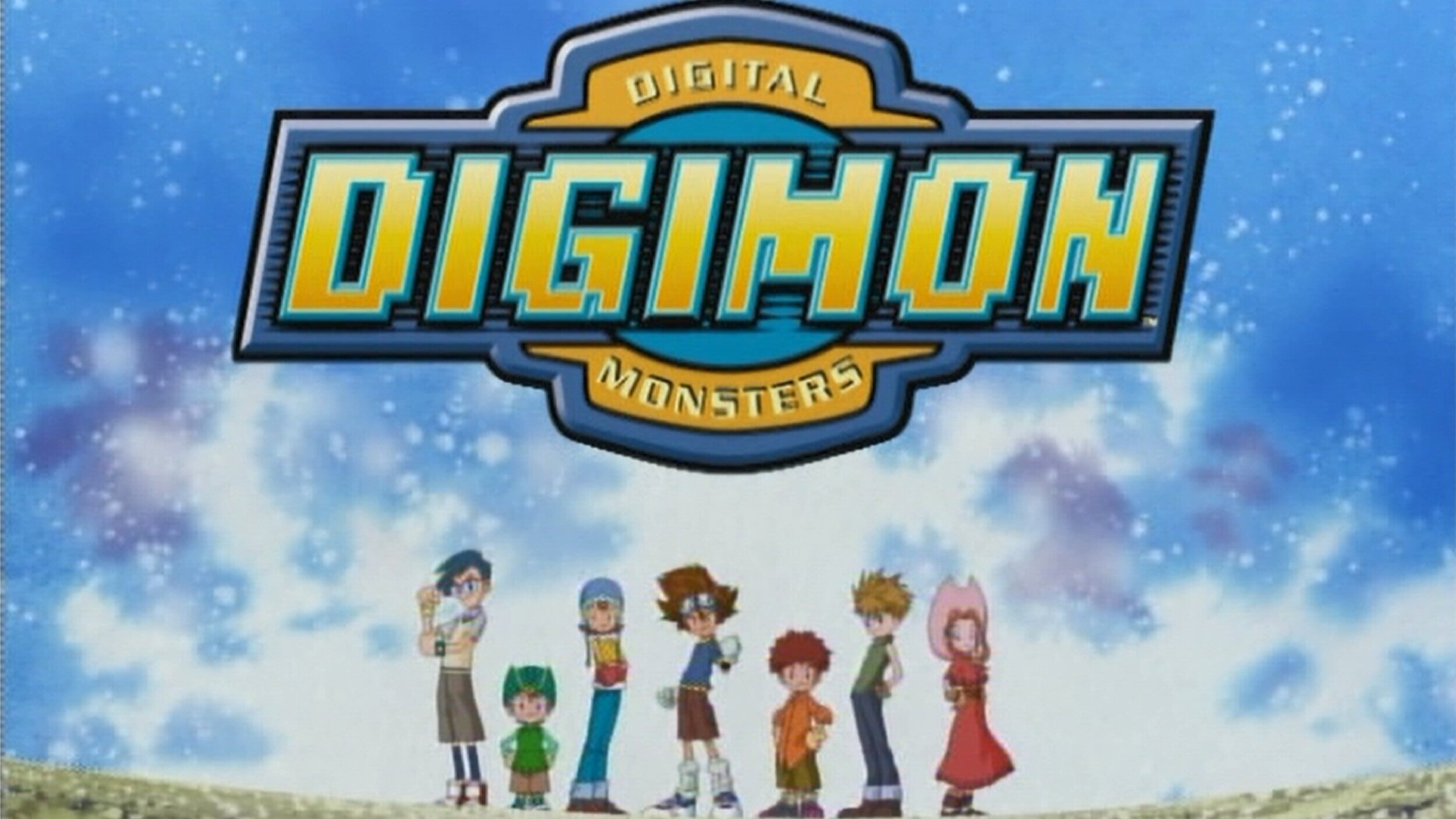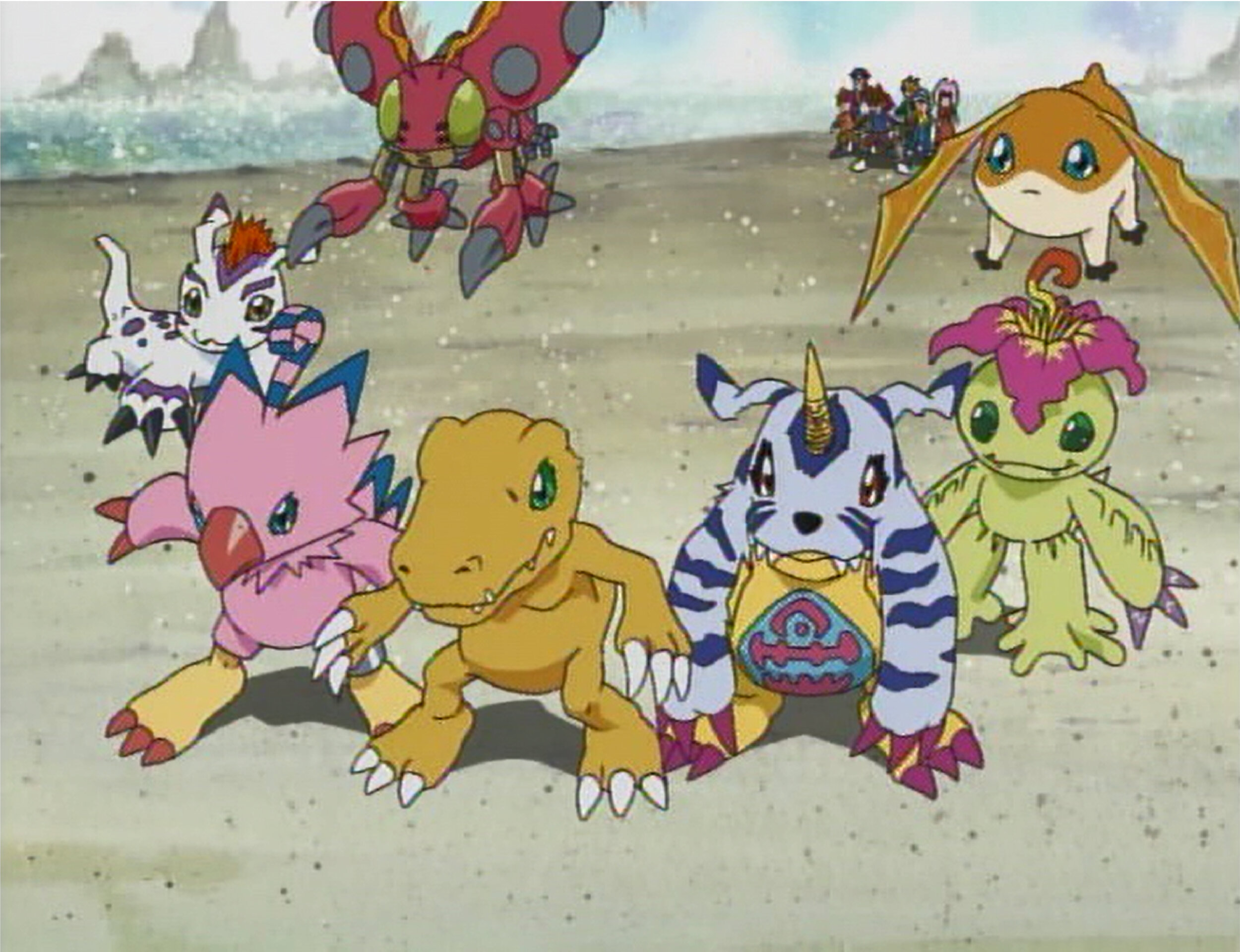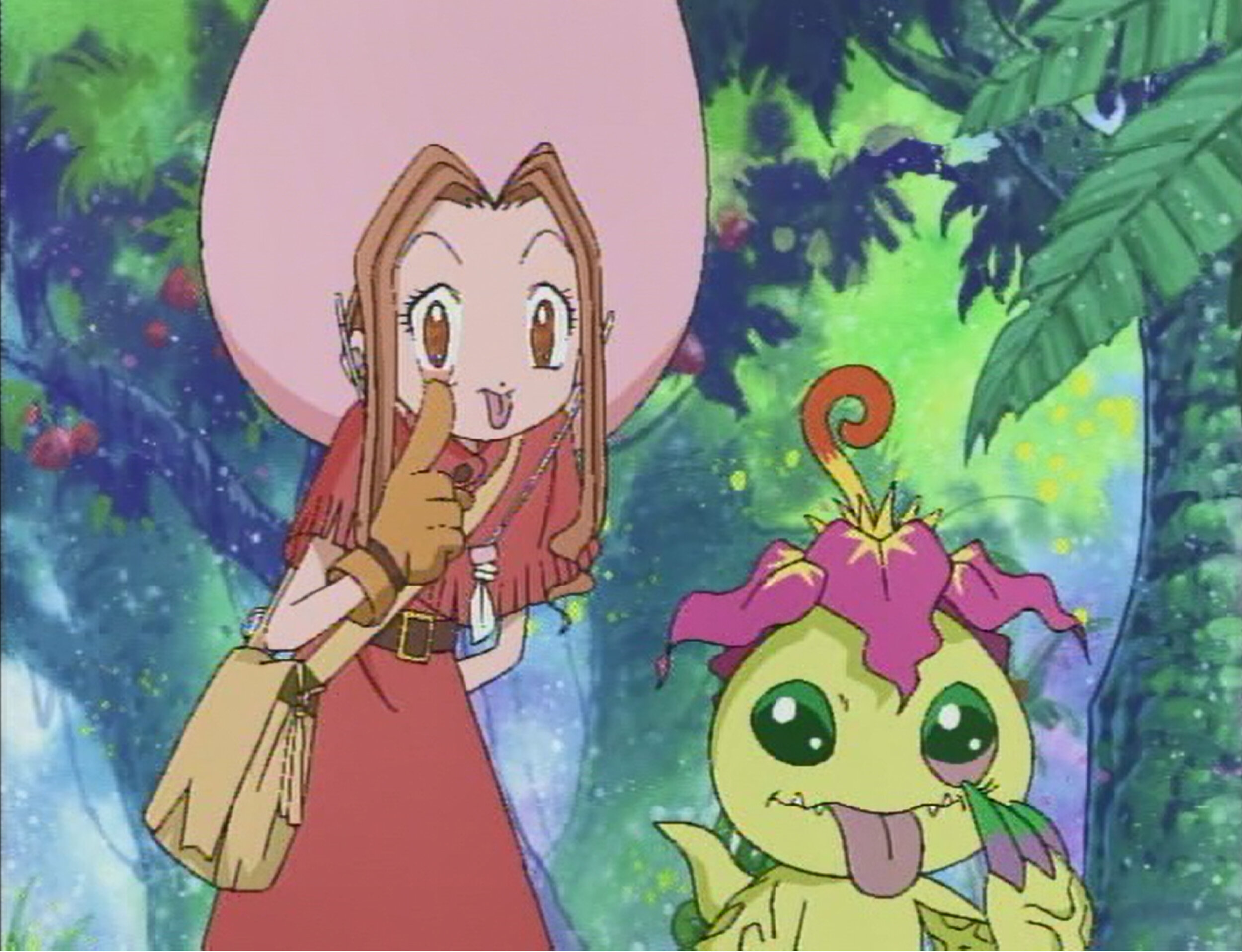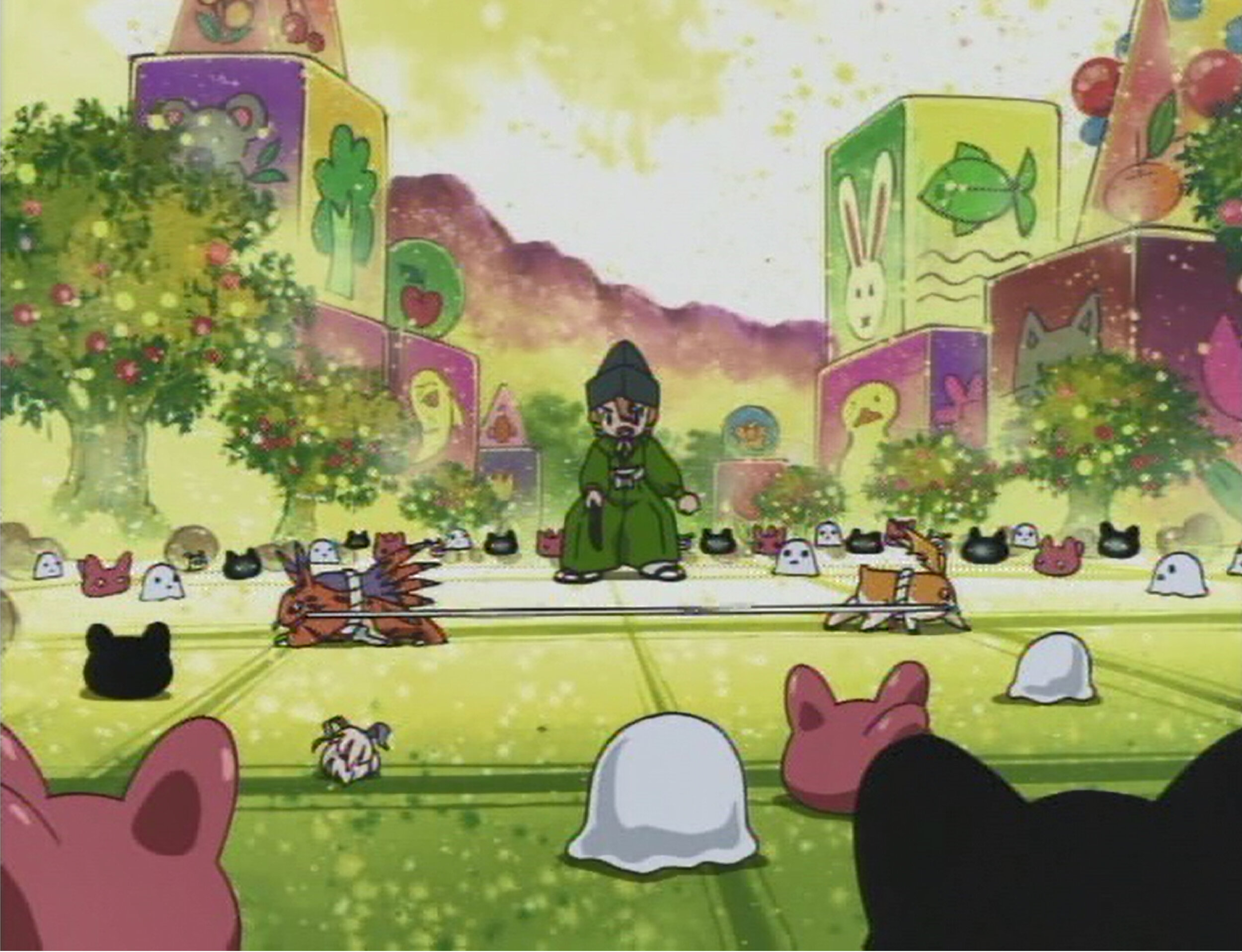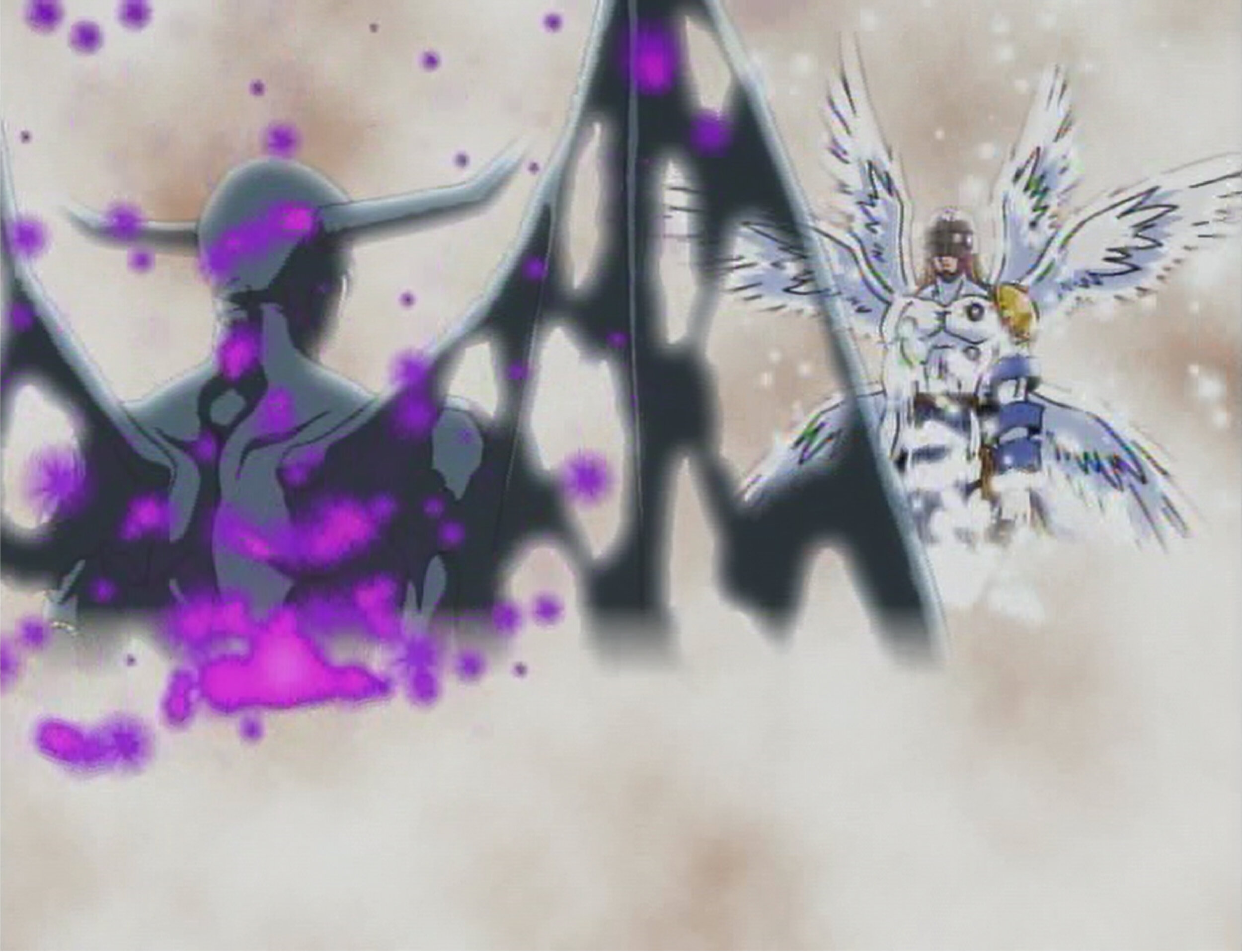Digimon (1999) Revisited - Devimon Arc
Digimon Adventure: (2020) is doing a kick ass job as an updated take on the original series. The biggest issue it has is the week to week wait to watch it. So, why not get some extra Digi-goodness in your life by going back to where it all began with a look into Digimon Adventure (1999).
This post is going to be the beginning in a continuing series, where Digimon Adventure (1999) is broken up into its four main story arcs (delineated by their villains), and each one is explored for what it adds to the whole.
First up is a journey to where it all began, with the first thirteen episodes of the series. The Devimon Arc.
(Note: all references to specific names will refer to the dub of the series. Dubs are my personal preference, and this is the version that I grew up with.)
Recap
Seven children are suddenly transported from their Summer camp to another world entirely, where each of them is met by their own little creature friend, a Digimon. These Digimon digivolve into slightly bigger forms to fight off an enemy Digimon that is looking to harm the children.
This arc is split into two halves, the first of which consists of the children running into bigger Digimon, only to have one of their partner Digimon grow to their champion level in order to fight back. This happens for all them except for Patamon, TK’s Digimon. At first, they are attacked by wild Digimon that just seem angry and mean, but soon it is revealed that some of these enemies are good Digimon infected by black gears that cause them to turn evil.
Around the midpoint, the children come face-to-face with Devimon, the evil Digimon behind the black gears. They are separated, with the entirety of the island split up into pieces that are floating further and further away from Devimon’s base at the top of Infinity Mountain. From here, the children need to find each other so that they can take on Devimon as a team.
The children are reunited and told that they are the Digidestined, chosen children meant to free the Digital World from evil. As they enter the final battle they discover their Digimon aren’t actually powerful enough to defeat Devimon. Patamon finally digivolves to Angemon and absorbs the power of all the others to destroy Devimon, sacrificing himself in the process.
Commercial Origins
While usually dismissed as a Pokemon clone (thanks, in part, to the name of the series), Digimon began as something totally different: a Tamagotchi clone that would be aimed at boys. Like many series that are originally aimed toward younger audiences, this was a show created to sell toys and games.
Beginnings are hard. This is always true of storytelling. But in the case of Digimon Adventure (1999) it is further hindered by the way it was meant to act as a commercial. In this opening arc, it is hard not to notice the seams between narrative and ad.
Though the children are driven by their search for a way home, the show doesn’t spend much time on that. Rather, it is simply an explanation to keep the kids moving and eventually put them up against Devimon.
What the show does put its time into (especially in the first half) is showing off at least one brand new Digimon and one new digivolved version of the partner Digimon in nearly every episode. This is to drive home the main mechanic of the games, having your Digimon grow to stronger forms to fight. Not only that, but every new Digimon they show off has the chance of being someone’s favourite, upping the chance to sell toys.
As a final point, it seems that the initial creation of the series being to act as a commercial could explain the low animation budget. This is a series built on minimal animation, including many recycled sequences reused throughout. If it was seen as a way to sell a product more so than being a product of its own, there is a degree of sense to it not being given the budget of other series (though, this part purely speculation).
This may all come off as a rather cynical look at the creation of Digimon Adventure (1999) but it isn’t meant to be. Where something comes from can be incredibly insightful when exploring what it becomes. Having started out in this way makes its shortcomings more understandable, and its successes that much more impressive.
Characterizations
The place where these origins most work against the series is in its number of characters. As an ad, more characters seems like the way to go, it shows off more Digimon and gives the audience a higher chance of relating to someone (and in doing so, giving them a reason to want that character’s partner Digimon).
The problem comes with the fact that having seven children and seven partner Digimon makes it incredibly difficult to give any of them much characterization or development in this relatively short time.
In the pilot episode, Tai gives a narration to set up that the world going a little crazy and introduces us to all the characters. The way he narrates lets us know that he is the leader to some extent. He gives each of the other six children a single statement about who they are. Sora is a tomboy, Matt’s cool, Izzy likes computers, Mimi likes pink, TK is Matt’s younger brother, and Joe is very anxious (mildly paraphrased).
On top of this, as soon as the children are brought to the Digital World, each of them is met with their own partner Digimon. This all adds up to fourteen characters for us to follow, all introduced within the first episode.
One way in which this is alleviated is by the Digimon partners existing more in their relationship to the children than as new characters of their own. Basically, the partner Digimon each act in a way that either reinforces the child’s personality (ie: Agumon will rush into things as quickly as Tai) or contrast them (ie: Gomamon is a goof while Joe is high strung).
The series does do its best to give each of the children some degree of development, it just doesn’t have the time to go very deep at this point. In each episode where a child’s Digimon reaches the next level, that child is made the focus. And then in the second half of the arc, when the children are all split up, the way they are paired off gives more time to see them each be highlighted further.
As a problem, this is one that is far more prominent when breaking up the series into parts than when looking at it as a whole. Given the full 52 episode run of the season, a lot of these problems are dealt with. But, unfortunately, this arc is faced with the most difficult duty of setting up this entire world and array of characters all at once, forcing it to only be able to give a thin slice of time to any of them.
Rival Leadership
Tai is made the leader, shown to be brave and ready to fight off the bad guys to help his friends. Matt is essentially like a lieutenant and is shown to put himself in danger if it means trying to protect his friends (doubly so for his brother). There is a slim difference between the ways the two go about things, but it is an important one. While they want the same end goals, Tai fights first, and Matt protects first.
Multiple times throughout this arc the two of them butt heads over how to progress. One such argument comes out in episode 7, “Ikkakumon’s Harpoon Torperdo”, when the two of them fight over whether they should try to climb Infinity Mountain.
Tai argues that because it is so high, if they reach the top, they could get a better grasp of their surroundings and find a way home. Matt argues that it is too dangerous, that they might not all survive a climb to the top. It’s a situation where both just want what is best for the group, and neither is totally wrong.
Their differing views reaches a climax (for this arc) in episode 9, “Subzero Ice Punch”. After the seven kids have been split up, Tai and Matt are the first to find each other. Tai believes that their priority should be defeating Devimon in order to help their friends, while Matt wants to prioritize finding their friends to make sure they are all safe. The argument becomes so heated that it evolves into a full-on fist fight, ending only because they are attacked by Mojyamon, a Digimon infected by a black gear.
The two want to make sure everyone gets home safe, but their respective beliefs on how to accomplish this has them clashing again and again. While it leads to one fight already in the series, nothing about their rivalry is resolved by the end of it, leaving the door open for many possibilities in the future.
The Girls of Digimon
As mentioned above, Digimon was created as a Tamagotchi aimed at boys. And, it being 2020, it feels worth pointing out the ridiculousness of these things being gendered at all. Unfortunately, mixing this male targeted attitude with the lack of time for character development in these early episodes adds up to a not so great situation for the girls.
With seven human characters in the show, only two are girls. There is Sora, who we’re told is cool (presumably because she is into boy stuff), and Mimi, who likes pink (making her more feminine).
While a lot of the time it seems like Sora has the most in common with Tai and Matt, she is never given the same amount of respect as those two. This is most problematic when the group is separated, and she is paired up with Joe in episode 11, “The Dancing Digimon”.
Between the two characters, Sora is much more levelheaded and seems like she would be the better leader. But, rather than her take charge, the entire episode is about her being asked to let Joe lead, to boost his confidence. It’s never presented quite in a way of the boy being ashamed of listening to a girl, but it is hard to not see a degree of a similar toxic masculinity going on, especially with how quickly the leadership role goes to Joe’s head.
Then there is Mimi. Mimi is often aligned most with TK, in such ways as how we get multiple instances of the two in a shot together crying over the situation they find themselves in. While there is nothing wrong with being upset over what they are going through (and all the children show it in different ways), the direct comparison between the most feminine character with the most childish character seems problematic.
On top of this, in both episodes where Mimi is given more focus, she meets Digimon who end up falling madly in love with her. In both instances she succeeds only after being helped, either in battle or with information, by a seemingly male Digimon that want her attention. There might be something to be said about the commentary being made by both instances using Digimon who are shown to be so gross they throw their own poop as an attack, but the fact that this is shown as her only means of victory every time she is separated isn’t ideal.
The one dimensionality of the characters in this first arc is a necessary evil created by the high number of them with only a limited number of episodes. Unfortunately, it leads to the girls being characterized entirely by their connection to femininity. While each of the characters feel like shorthand archetypes, only the girls so unabashedly have their personality and actions connected to their gender.
Partners in Opposition
As mentioned above, the Digimon partners are given characterizations that either reinforce or contrast with their child. Because of this, they exist almost more to bring out the personalities of the children rather than fully function on their own.
When it comes to contrast, none of the Digimon stand out as much as Gomamon. Sure, Tentomon questions Izzy choosing of computers over people, and Palmon questions Mimi’s occasional superficial views, but they don’t outright challenge their partner as much as Gomamon does.
While Joe is anxious and high strung, Gomamon relaxed and loves to make jokes. But that isn’t all there is going on with Gomamon.
In episode 7, “Ikkakumon’s Harpoon Torperdo”, Gomamon spends much of the beginning of the episode straight up calling Joe out. Gomamon’s usual relaxed personality bumps up against Joe’s demeaner to the point he is almost hostile in the way he talks with Joe. He even calls Joe a stuffy stick in the mud, leading to the two of them having to be broken up by Matt to stop them from fighting.
Joe decides to climb Infinity Mountain himself to get answers for the group. He feels that as the oldest one there, he should take on this risk himself to end the fight between Tai and Matt. But, Gomamon follows him. When Joe tells Gomamon to stay with the others, Gomamon makes the claim that he isn’t following Joe, he just has his own business to deal with on the mountain.
Gomamon cares about Joe. He challenges Joe, not to get on his nerves but because Gomamon knows it is what will have the greatest effect.
While a push is usually what Joe needs, Gomamon is also the first to notice when the opposite is true. In episode 11, “The Dancing Digimon”, it is Gomamon that asks Sora to let Joe be the leader, because recent defeats have been hitting Joe so hard that he’s stopped believing in himself.
Gomamon is unique among the partner Digimon in just how much he much he opposes his partner, but is still willing to do anything to protect Joe.
Lore and Izzy
There are two incredibly interesting things about Izzy as a character in comparison to the rest. One is his interest in computers, leading to his episodes being the ones that give the most lore about the Digital World. The second is how he is the only character in this first arc to be presented as having something driving him that is left as a mystery.
In episode 5, “Kabuterimon’s Electro Shocker”, Izzy hooks his computer up to a giant digital battery. He plays with some computer code and learns that it has a real effect on everything in this world, leading him to the conclusion that the world itself is digital.
Izzy spends this episode focused on what this means for their situation while the rest of the children and their Digimon explore a factory. Tentomon, Izzy’s partner, questions him about this, asking if he ever feels left out. In this moment, Izzy thinks back to his past, to a moment when he was younger and saw his parents deep in discussion. His parents are in a debate over whether they should tell him something.
At this point in the series, we don’t hear what it is they are thinking about telling him, though we get the impression that he did. We’re shown enough that believe that this is a defining moment for Izzy’s character, but the series makes us wait to know what it could mean.
The closest we get to such a moment with any of the other characters is a flashback with TK. But, while TK says he doesn’t know who was there, the flashback itself clearly shows the viewers that it was Matt.
The next time Izzy gets a chance to shine is episode 10, “A Clue from the Digi-Past”. The group is torn apart, but rather than look for any of his friends, Izzy sits down in a temple and begins trying to decipher the glyphs across all the walls. This episode leads to the explanation as to what the digivice is, “a preserver of light, the last line of defense against the darkness that threatens existence”. Once again, the lore of the series comes out because of Izzy’s curiosity.
As a side note, this episode also contains one of the cooler plots, where Mimi goes off with Tentomon and Izzy is left with Palmon. This mixing up of child and partner leads to them no longer being able to digivolve until they can find each other again, creating a new form of tension.
Innocence in the Battle of Light and Darkness
The theme of this arc is based around good vs evil. As far as subtly goes, the final fight literally has an angel against a devil. But, there is a little more going on beneath the surface.
Leomon is introduced midway through the arc, where in his first scene he is already fighting with Ogremon. These two exist as a microcosm of the good vs evil theme, in that the only reason presented as to why they fight is simply because Leomon is good and Ogremon is evil.
This first fight between them is broken up by Devimon who tells them to work together in order to kill the Digidestined. When Leomon refuses, he is taken over by Devimon’s evil and forced to comply.
This happens to Leomon multiple times in this arc. Though he is a good and virtuous Digimon, he can be corrupted, with only the light from the children’s digivices able to make him good again.
When Leomon is returned good for a second time, he explains to the kids the legend of the Digidestined. He tells them that a group of children will arrive in the Digital World with the power to save it from destruction. And, it is implied that this destruction is referring specifically to Devimon. The fact that the legend calls out that they will be children is important here.
Children often represent innocence. It isn’t enough to be good, like Leomon, in order to win they need the innocence of children. It seems that this is what the power of light really is, not pure goodness, but innocence itself.
The black gears affect on any good Digimon can be looked at in a similar way to this specific example of Leomon, but Leomon’s active role in the adventure as well as his constant battle with Ogremon makes him the most apt example.
The penultimate episode of the arc, “Digibaby Boom”, has TK and Patamon stumbling upon a nursery where Digimon eggs are hatched. TK is the youngest of the group, and the only one to not have their partner Digimon digivolve, but in this episode Patamon comes close. The thing is, TK doesn’t want Patamon to digivolve, he doesn’t want to fight at all. TK, both through his young age and his resistance to violence, is the embodiment of innocence for the group.
So, given TK’s position in the group, it makes the most sense that it would be his Digimon who is able to defeat Devimon in the case that the answer to fighting evil is innocence more so than simply goodness.
While it is TK’s innocence that creates Angemon, it is only by absorbing power from the entire group that Angemon can deliver the final blow. He uses absolutely all of his own power in the process, sacrificing himself to safe them all, before returning to an unhatched egg.
Conclusions
While at times this dive into Digimon Adventure (1999) may not have been the most glowing review, it is rough start that opens the door to an incredibly nostalgic story.
There is a concept in design that form should follow function, but the unfortunate case for the Devimon Arc is that its function completely dictated its form. This arc is weighed down by the needs of its purpose, but also lays the groundwork to become something greater.
The entirety of these thirteen episodes take place on File Island, which can sometimes give the feeling that the entire Digital World is tiny and mostly uninhabited. But the arc ends with the news that there are even more powerful Digimon across the sea. This island that has looked so small in the first arc is revealed to have only been a portion of what exists in the Digital World.
As a metaphor, we can look at the characters and story in the same way. For the most part they look almost one dimensional, but especially with Izzy we can see that there might be something else there. Much like how the arc ends with the promise of a bigger world to explore, there exists the idea that there is more to explore with the characters themselves.
Next up: Etemon.

